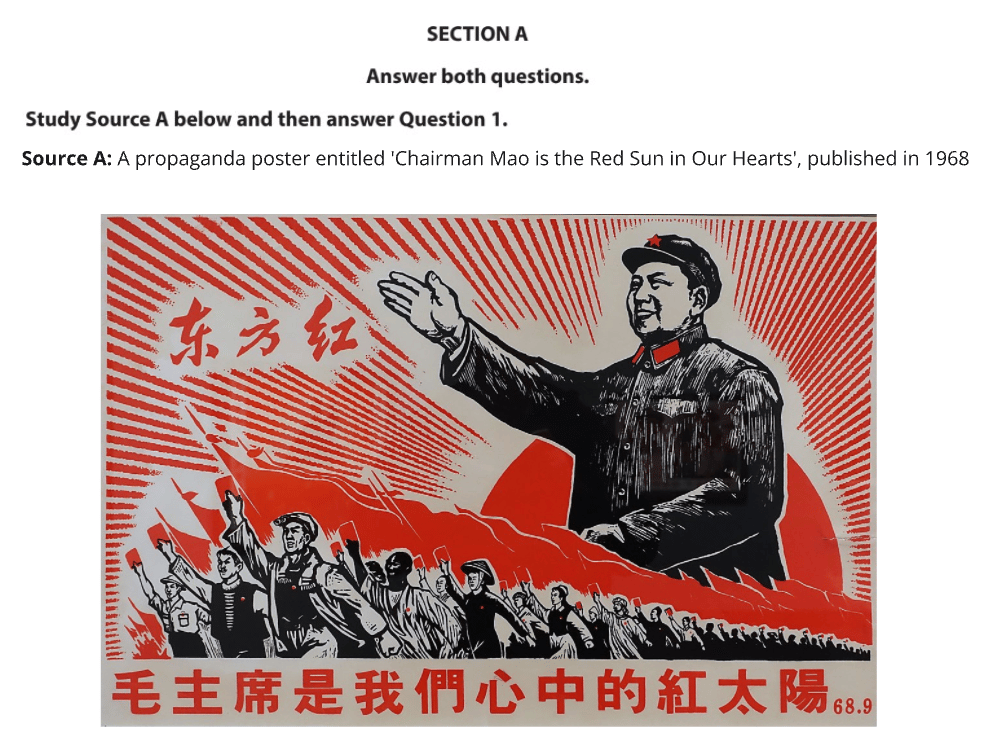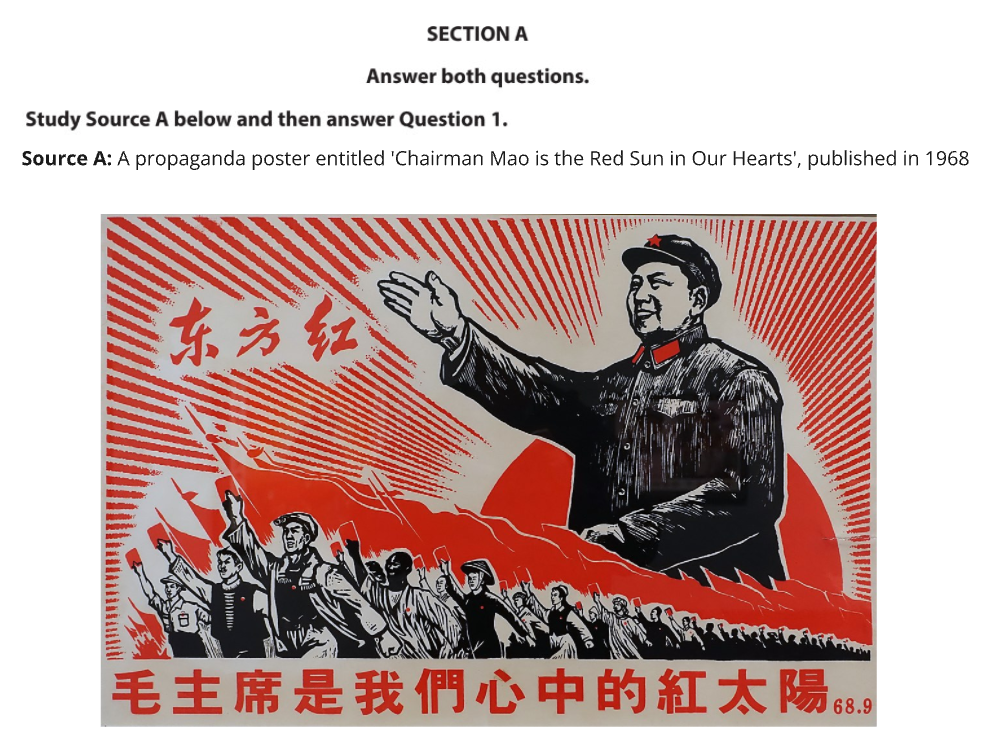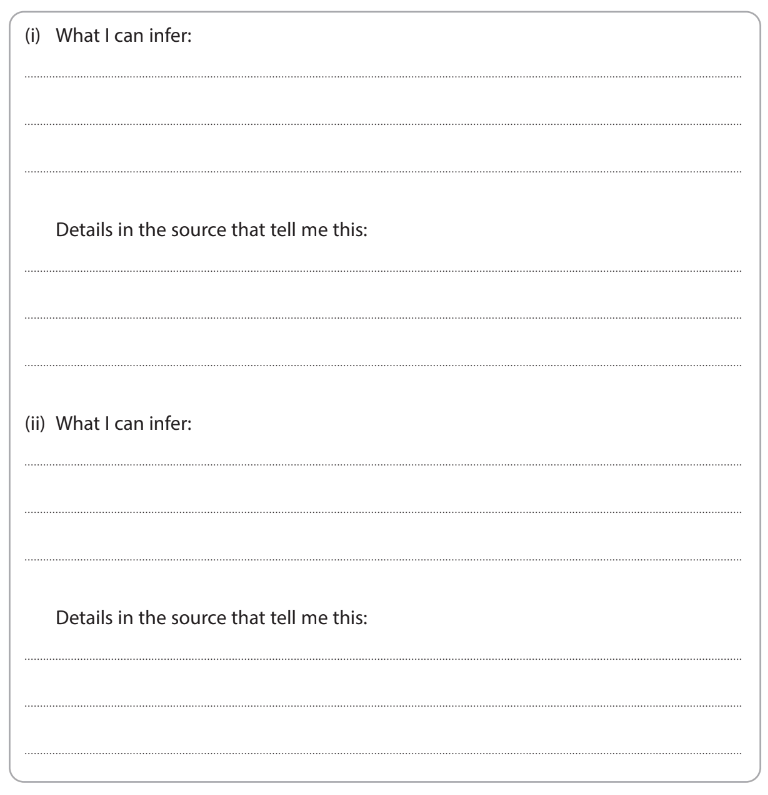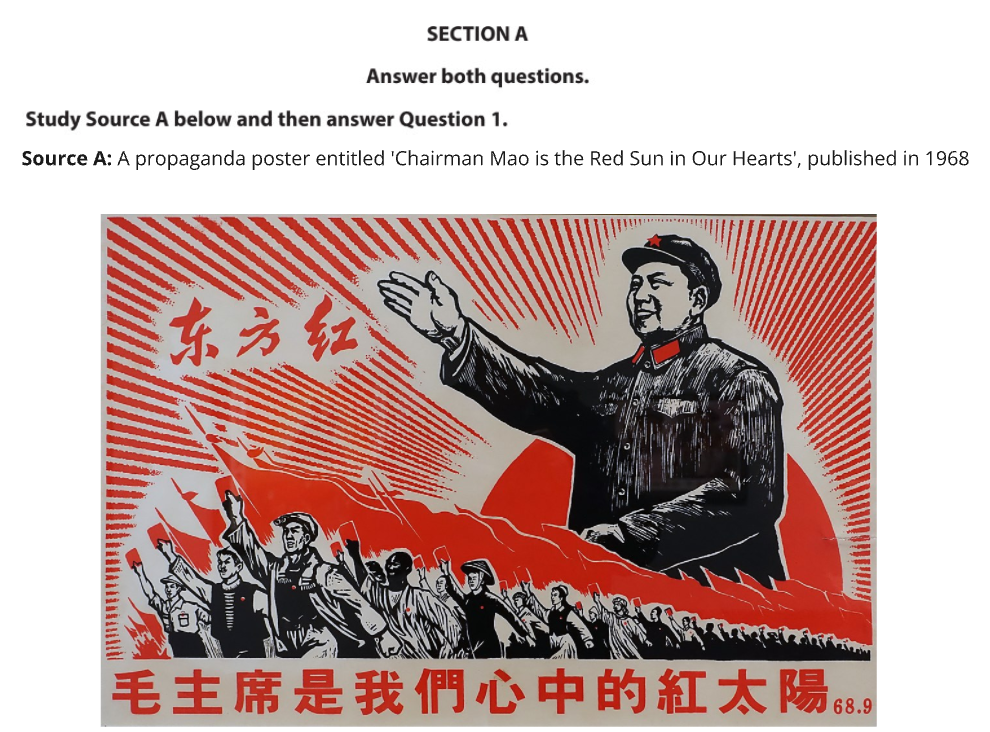The 4 Mark "Give Two Things You Can Infer" Question (Edexcel GCSE History): Revision Note
Exam code: 1HI0
Summary of Question 1
Question 1 requires you to make two inferences about Source A
Each inference must be directly supported by a detail or a quote from the source
The answer section is broken down into four guided questions
Amount of marks | 4 |
|---|---|
The time that you should spend on the question | No more than 5 minutes |
An example of the type of question you may encounter can be seen below:

In previous years, this question has focused on the following topics in Mao's China:
Year of Exam | Question Topic |
|---|---|
2018 | The influence of the cult of Mao (opens in a new tab) |
2019 | People’s communes (opens in a new tab) |
2020 | The "Up to the mountains and down to the villages" campaign (opens in a new tab) |
2021 | No paper available |
2022 | The mass rallies held during the Cultural Revolution (opens in a new tab) |
2023 | The problems facing the new CCP government, 1949 (opens in a new tab) |
2024 | The actions of the Red Guards |
What is an inference?
An inference is an educated guess based on evidence
To remember how to infer, follow these steps:
I notice — What does the source show or say?
I already know — What own knowledge do you have?
Now I am thinking … — Combine the above to make your inference
For the Mao's China exam, you will need to:
Study Source A
Utilise your own knowledge to make sense of the source
Make a statement about Source A, connecting what you can see and what you know
Using the content of a source
The content is the information presented in the source
The content could come from a variety of different types of sources, such as:
A picture
A photograph
An extract from a book
A speech
A political cartoon
A letter
You should use details from the content (a quote or description) to support each inference
In the example question, you should look at Source A for information about propaganda during the Cultural Revolution
How to answer a "Give two things you can infer" question
Question 1 will always be based on Source A
You will find Source A on the first page of the answer booklet
Do not use the sources in the insert booklet
Sources B and C are clearly marked for Section B of the paper

To begin, read the question carefully
Underline the topic mentioned in the question
Read the source in full several times
If Source A is a visual source, take your time to study the source
Annotate the source by applying knowledge to the source that is relevant to the question
"Give two things you can infer" question structure
The "Give two things you can infer" answer space is laid out clearly into four guided sections

Section | What to Write |
|---|---|
"What I can infer" | Your first inference (1) |
"Details in the source that tell me this" | A quote (for a written source) or a description (for a visual source) (1) |
"What I can infer" | Your second inference, different from your first inference (1) |
"Details in the source that tell me this" | A different quote or a description (1) |
You will be limited to 2 marks if you:
Only write inferences
Only select details from the source
Write more than two inferences
Do not back your inferences with details from Source A
Worked example of a "Give two things you can infer" question
Worked Example
Give two things you can infer from Source A about how the Communist Party used propaganda during the Cultural Revolution.
Complete the table below to explain your answer.

(4)
Answer:
What I can infer: The Communist Party wanted people to see Mao as god-like. (1)
Details in the source that tell me this: Mao is shown much larger than everyone else in front of a giant red sun with red rays shining out from him like light or power. (1)
What I can infer: The Communist Party used propaganda to gain support from young people. (1)
Details in the source that tell me this: The people in the crowd look like young adults, shown smiling and holding up red books while waving red flags. (1)

Unlock more, it's free!
Did this page help you?